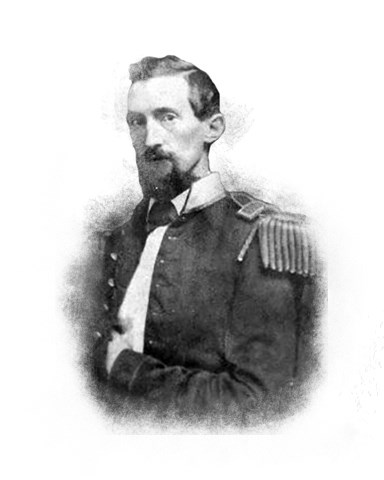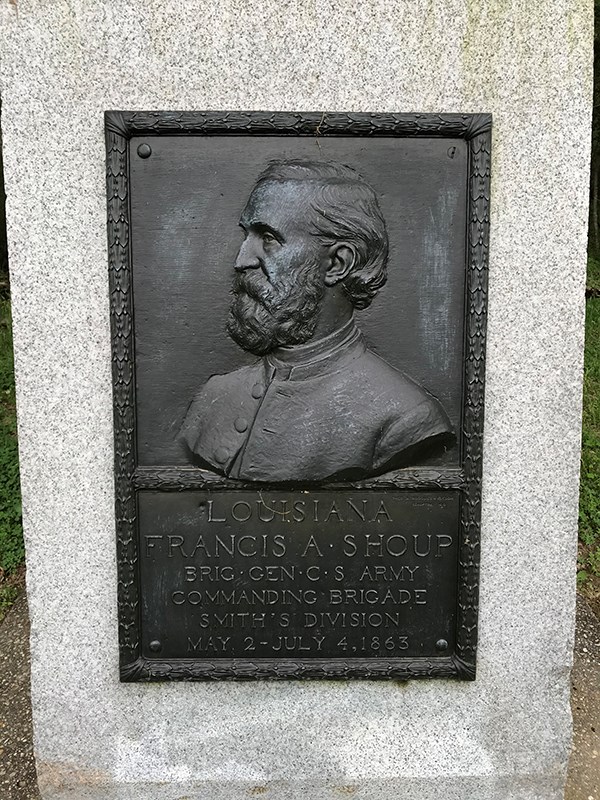
Public Domain Born in 1834, in Laurel, Indiana, Francis Asbury Shoup attended Indiana Ashbury University before graduating from the United States Military Academy at West Point (Class of 1855). Shoup saw action in the Third Seminole War in Florida, but resigned his commission and returned to practice law in Indianapolis in 1860. Shoup, a Jeffersonian Democrat, abruptly moved to Florida when the clouds of war were developing, much to the shock of his neighbors. By the time of the Vicksburg campaign, Shoup served as an artillery instructor in Mobile, Alabama, fought at the Battle of Shiloh, was commissioned a Brigadier General led a division at the Battle of Prarie Grove, Arkansas, and was transferred to Mobile, Alabama until summoned to Vicksburg in April 1863. After being paroled, Shoup joined the Army of Tennessee as Chief of Artillery during the Atlanta Campaign. During that time, Shoup created a series of thirty-six arrow-shaped forts along the Chattahoochee River. These unique forts were affectionately called “Shoupades” by the Confederates. Shoup claimed that he designed them after the bastions he observed on the Castillo de San Marcos in St. Augustine, Florida. Many were impressed by the defenses, including his old Vicksburg adversary, General Sherman, who called them, “the best line of field intrenchments (sic) I have ever seen.” Shoup served as a staff officer with the Army of Tennessee throughout the end of the war. At one point, Shoup even advocated for allowing slaves to fight for the Confederacy, but it would be too little too late. After the Civil War, Shoup utilized his education and military experience to become a professor of mathematics and engineering. He wrote numerous books and articles, finishing his career as a professor at the University of the South in Sewanee, Tennessee in 1883. He died on September 4, 1896 in Columbia, Tennessee, and was buried in the University of Sewanee Cemetery. 
NPS Brigadier General, CSA.Commanding Shoup's Brigade, Smith's Division, Army of Vicksburg, April 23 - July 4, 1863.Cost: $300 for bronze by State of Louisiana. Sculptor: T.A.R. Kitson Erected: July 1910 Location: Confederate Avenue, 150 yards west of Graveyard Road. |
Last updated: March 25, 2020
